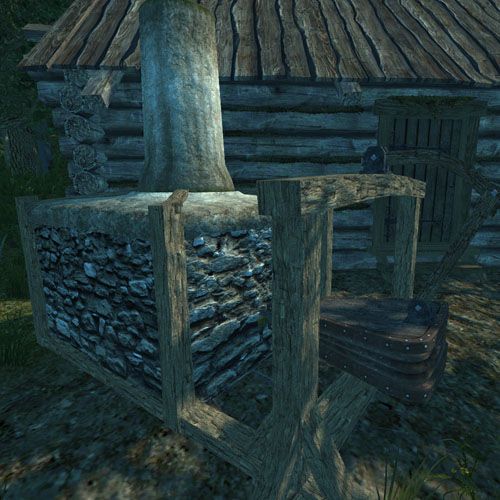

Another vast improvement, due to its augmented design, was that the plough deposited the newly turned soil top-down, meaning that any weeds growing would be smothered without having to be removed. Plough, Heavy (Mouldboard) The heavy plough was a significant improvement on the ard, with a much heavier blade which created a deeper furrow in the ground. The ard was used with great success in southern Europe and around the Mediterranean where the soil is light and sandy, but was much less efficient in the heavy, clay-rich soil of northern Europe.

The plough was used to turn and loosen the soil, in order to bring the most fertile part of the topsoil to the top whilst, at the same time, creating a hole where the seeds could be planted. The ard was similar to the handheld hoe, but because its wooden peak remained semi-buried in the ground it was much faster and more efficient than the hoe. 1410) Plough, Light (Ard) The ard, also known as the light plough or scratch plough, was a wooden tool that was dragged through the soil, usually by an ox or a work-horse (heavy horse), though sometimes by humans. Medieval tools: Pitchfork, Rake and Haymaking (Duke du Berry, Books of Hours, c. Finally, the axe was also used to humanely end the life of livestock before bleeding them (to ensure that the meat doesn’t spoil). Cutting wood was essential for a variety of tasks, from providing their house with fuel for the hearth, to building structures and even other tools. Villagers used the axe mainly for two jobs cutting wood and killing animals – primarily wild boars, which threatened their families or livestock. The idea behind a simple, medieval tool like the axe is that its haft essentially works as a force multiplier, allowing its sharp, wedge-like metal blade to focus this force onto a very small amount of surface area. The axe was thus a very powerful cutting tool, that also slightly extends the reach of the user. The Medieval Tools Axe In many ways the axe is one of the oldest, if not the oldest, tools in use during the medieval ages. Certain technological developments single-handedly pushed the growth of population across the whole of the continent. Only a very small portion of the population lived in cities and they were heavily dependent on the surplus that the agrarian settlements (villages) produced.Īs we will see, tools had a profound impact on the development of medieval, as well as modern, civilisation. Feudal medieval Europe was primarily an agricultural economy. Even since the dawn of the first human settlements in 5000 BC, agriculture has played a vital role in the development of every civilisation over 6000 years later, this remains the case today.


 0 kommentar(er)
0 kommentar(er)
